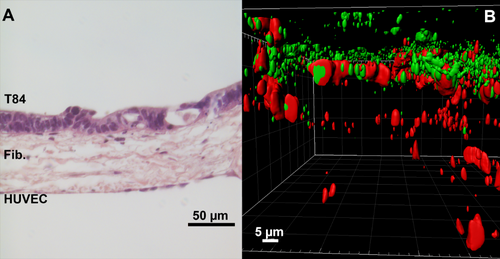3D tissue models for Neisseria gonorrhoeae infection research
One of the research interests of Kozjak-Pavlovic group is investigation of bacterial and cellular factors involved in the interaction of Neisseria gonorrhoeae with the epithelial and immune cells of the host. N. gonorrhoeae is an obligate human pathogen and causative agent of the sexually transmitted disease gonorrhea. The bacteria depend on Pili for initial adhesion, Opa proteins for invasion and PorBIA porin for dissemination. Neutrophils are the first responders during gonococcal infection. However, N. gonorrhoeae can survive the neutrophil attack, using them as a trojan horse for spreading from the primary infection site. To study gonococcal infection in a close to natural environment, as a part of the GRK 2157, we have developed relevant three-dimensional urogenital tract tissue models of increasing complexity. The models are based on porcine small intestine submucosa scaffold (SIS) populated by human fibroblasts and seeded with a layer of epithelial cells representing various mucosal surfaces of the urogenital tract. Optionally, a layer of endothelial cells on the opposite side of the scaffold mimics the blood vessel lining. In the most complex setup, we have added neutrophils to the endothelial side of the models and were able to demonstrate their migration through the tissue and interaction with gonococci. Currently, we are working on further development of the models, introduction of primary, organoid-derived cells and, using the mutant library of N. gonorrhoeae generated by transposon mutagenesis, we are identifying and studying neisserial factors important for the survival of bacteria upon the contact with neutrophils.








